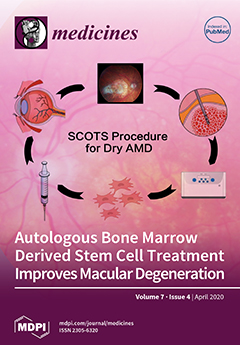Open AccessArticle
Piperine Inhibits TGF-β Signaling Pathways and Disrupts EMT-Related Events in Human Lung Adenocarcinoma Cells
by
Leonardo Marques da Fonseca, Lucas Rodrigues Jacques da Silva, Jhenifer Santos dos Reis, Marcos André Rodrigues da Costa Santos, Victoria de Sousa Chaves, Kelli Monteiro da Costa, Julliana de Nazareth Sa-Diniz, Celio Geraldo Freire de Lima, Alexandre Morrot, Tatiany Nunes Franklim, Douglas Chaves de Alcântara-Pinto, Marco Edilson Freire de Lima, Jose Osvaldo Previato, Lucia Mendonça-Previato and Leonardo Freire-de-Lima
Cited by 23 | Viewed by 5497
Abstract
Background: Piperine, an amide extracted from the Piper spices, exhibits strong anti-tumor properties. However, its effect on the epithelial–mesenchymal transition (EMT) process has never been investigated. Herein, we evaluate the toxic effect of piperine on lung adenocarcinoma (A549), breast adenocarcinoma (MDA-MB-231) and hepatocellular
[...] Read more.
Background: Piperine, an amide extracted from the Piper spices, exhibits strong anti-tumor properties. However, its effect on the epithelial–mesenchymal transition (EMT) process has never been investigated. Herein, we evaluate the toxic effect of piperine on lung adenocarcinoma (A549), breast adenocarcinoma (MDA-MB-231) and hepatocellular carcinoma (HepG2) cell lines, as well as its ability to inhibit EMT-related events induced by TGF-β1 treatment.
Methods: The cell viability was investigated by MTT assay. Protein expression was evaluated by Western blot. Gene expression was monitored by real-time PCR. Zymography assay was employed to detect metalloproteinase (MMP) activity in conditioned media. Cell motility was assessed by the wound-healing and phagokinetic gold sol assays.
Results: The results revealed that piperine was cytotoxic in concentrations over 100 µM, showing IC50 values for HepG2, MDA-MB-231 and A549 cell lines of 214, 238 and 198 µM, respectively. In order to investigate whether piperine would reverse the TGF-β1 induced-EMT, the A549 cell line was pretreated with sublethal concentrations of the natural amide followed by the addition of TGF-β1. Besides disrupting EMT-related events, piperine also inhibited both ERK 1/2 and SMAD 2 phosphorylation.
Conclusions: These results suggest that piperine might be further used in therapeutic strategies for metastatic cancer and EMT-related disorders.
Full article
►▼
Show Figures




